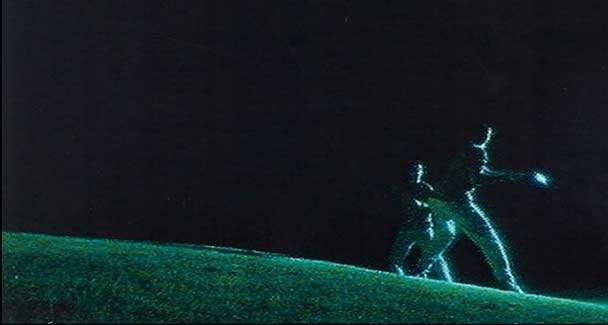Military Vision
We see distant battles played out in our living rooms. What has this done to our perception of war?
Overview
The aesthetic of modern warfare has permeated western culture at every level. Pixellated footage of decimated vehicles against backdrops of never-ending desert scenes open news broadcasts, provide fodder for video-games and make their way into mainstream entertainment in the form of thrillers like Zero Dark Thirty. Foreign lands and distant battles played out in our living rooms no longer seem shocking but familiar; what has this saturation of conflict footage done to our perception of the events they are portraying? Are we desensitised? Does seeing these images actually inform us anymore, or are the often indecipherably grainy and shaky videos captured by local residents on their phones just grist for the media mill?
Military Vision confronts such questions head on. Collating three video works created between 2000 and 2010 by artists Denis Beaubois, Matthieu Cherubini and Jordan Crandall that respond to political and military circumstances, the show builds a barrage of images that draw acute attention to often overlooked violence.
The concise Impact: There is no Aftermath (2004) shows footage captured by a camera that was violently tossed at the office of the Prime Minister. The physical rejection that results suggests a response to the confronting images that surround us everyday, perhaps communicating a collective, “We don't want to see this, you can have it back!”
The six-channel Heatseeking (2000) responds anachronistically to the United States' post-9/11 presence in Iraq and Afghanistan, where its aesthetic techniques (the same adopted by U.S. border patrol officials), presciently allude to an approach that has come to dominate the media of the 21st century. The piece's images of penetration, violence and horror-movie flashes of twisted and bound people create a disturbing and evocative interpretation of the damage wrought by American xenophobia.
The most conceptually interesting piece in the show is Afghan War Diary. Linked to an active game of Counter-Strike, the work automatically registers whenever a player has been killed. This virtual death is then attached to an actual one from the war in Afghanistan, instantly transporting the viewer to the location of the death via Google Earth. Afghan War Diary provides a perfect encapsulation of the abject distance that pop-culture and an over saturation of military images have created between us and the reality of death in warfare.
Although skilfully curated by Baden Pailthorpe, Military Vision feels a little outdated, but is nonetheless a fascinating take on what is now a part of our cultural history: our media's response to two baseless wars fought on our behalf.
Image credit Jordan Crandall





